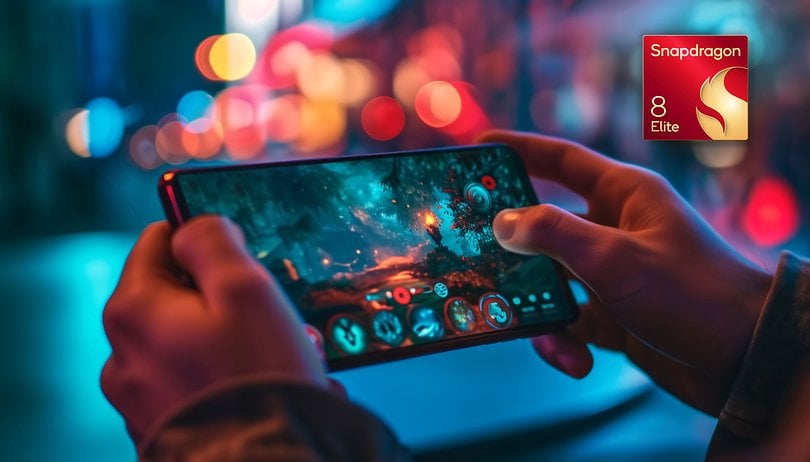Snapdragon Unveils New Name and Blazing 4.3 GHz CPU Core


Qualcomm has announced the chip that will power most flagship phones in 2025, and it promises to deliver impressive speed. In fact, it's so fast that Qualcomm decided it was time to revamp the naming scheme for its flagship SoCs (yes, again). The Snapdragon 8 Elite not only gets a new name but also introduces a powerful new CPU core clocked at a blazing 4.3 GHz—and that's just the beginning.
Thanks to TSMC's cutting-edge N3E process node—the same technology behind the high-performance Apple A18 Pro and MediaTek Dimensity 9400—Qualcomm has also made a significant design change. It has done away with the smaller efficiency cores, following a strategy MediaTek first adopted last year with its highly efficient Dimensity 9300, which is featured in devices like the recently reviewed Xiaomi 14T Pro and Galaxy Tab S10 tablets.
| Qualcomm Snapdragon 8 Elite | MediaTek Dimensity 9400 | Qualcomm Snapdragon 8 Gen 3 | Samsung Exynos 2400 | Google Tensor G4 | Apple A18 Pro | MediaTek Dimensity 9300 | Apple A17 Pro | |
|---|---|---|---|---|---|---|---|---|
| Prime core | 2x Oryon @ 4.32 GHz | 1x Cortex-X925 @ 3.62 GHz | 1x Cortex-X4 @ 3.3 GHz | 1x Cortex-X4 @ 3.2 GHz | 1x Cortex-X4 @ 3.1 GHz | 2x Apple Everest @ 4.05 GHz | 1x Cortex-X4 @ 3.25 GHz | 2x Apple Everest @ 3.78 GHz |
| Performance core | 4x Oryon @ 3.53 GHz | 3x Cortex-X4 @ 3.3 GHz | 3x Cortex A720 @ 3.15 GHz 2x Cortex A720 @ 2.96 GHz |
2x Cortex A720 @ 2.9 GHz 3x Cortex A720 @ 2.6 GHz |
3x Cortex-A720 @ 2.6 GHz | 3x Cortex-X4 @ 2.85 GHz | ||
| Efficiency core | 4x Cortex-A720 | 2x Cortex-A520 @ 2.3 GHz | 4x Cortex-A520 @ 1.95 GHz | 4x Cortex-A520 @ 1.92 GHz | 4x Apple Sawtooth @ 2.42 GHz | 4x Cortex-A720 @ 2.0 GHz | 4x Apple Sawtooth @ 2.11 GHz | |
| RAM | LPDDR5x-10667 5333 MHz (85.4 GB/s) |
LPDDR5x-10667 4x 16-bit @ 5333 MHz (85.4 GB/s) |
LPDDR5x-9600 4x 16-bit @ 4800 MHz (76.8 GB/s) |
LPDDR5x-8533 4x 16-bit @ 4266 MHz (68.2 GB/s) |
LPDDR5x 4x 16-bit |
LPDDR5x-7500 4x 16-bit @ 3750 MHz (60 GB/s) |
LPDDR5T-9600 4x 16-bit @ 4800 MHz (76.8 GB/s) |
LPDDR5x-6400 4x 16-bit @ 3200 MHz (51.2 GB/s) |
| GPU | Adreno | 12x ARM Immortalis-G925 | Adreno 750 (2774 GFLOPS) |
AMD RDNA3 (3406 GFLOPS) |
7x ARM Mali-G715 | 6x Apple GPU (2227 GFLOPS) |
12x ARM Immortalis-G720 (3993.6 GFLOPS) |
6x Apple GPU (2147 GFLOPS) |
| 5G modem | Snapdragon X80 (10/3.5 Gbps) |
MediaTek (7/3.5 Gbps) |
Snapdragon X75 (10/3.5 Gbps) |
External Exynos 5153 (12/3.67 Gbps) |
External Exynos 5400c | External Snapdragon X71 (10/3.5 Gbps) |
MediaTek (7/3.5 Gbps) |
External Snapdragon X71 (10/3.5 Gbps) |
| Connectivity | FastConnect 7900 Wi-Fi 7 Bluetooth 6.0 UWB |
Wi-Fi 7 Bluetooth 5.4 |
Wi-Fi 7 Bluetooth 5.4 |
Wi-Fi 6E Bluetooth 5.3 |
Wi-Fi 7 Bluetooth 5.3 |
External Wi-Fi 7 Bluetooth 5.3 |
Wi-Fi 7 Bluetooth 5.4 |
External Wi-Fi 6E Bluetooth 5.3 |
| Process node | TSMC N3E | TSMC N3E | TSMC N4P | Samsung 4LPP+ | Samsung 4LPP+ | TSMC N3E | TSMC N4P | TSMC N3B |
According to Qualcomm, the eight CPU cores in the Snapdragon 8 Elite are based on its second-generation custom Oryon cores, moving away from the standard ARM Cortex architecture.
This new mobile CPU core shares a server-based lineage with the Nuvia design, which Qualcomm acquired for its Snapdragon X Elite PC chips. It also marks Qualcomm's return to custom ARM cores in mobile, a space it helped pioneer with the Scorpion core found in the original Snapdragon S1 chips many years ago.
Qualcomm claims a 45% boost in performance and a 45% improvement in power efficiency. While these numbers might seem inflated at first glance, they're similar to MediaTek's figures. It’s important to note that both companies are bypassing the first generation of the "3nm" process, which debuted last year in Apple's A17 Pro.

The engineers from both companies apparently enjoyed having the new process at their disposal, with the performance cores in both chips clocked higher than the prime core in their predecessors. And for those worried about those high-frequency numbers, Qualcomm's engineers confirmed to nextpit that the CPU cores can be clocked “all the way down”, meaning that they can reach a power state with minimum consumption.
Not only that, Qualcomm brought a series of optimizations to the processing pipeline, and increased cache capacities to the CPU, with 12 MB of L2 cache for each of the CPU clusters. To feed the CPU, the Snapdragon 8 Elite supports fast LPDDR5x-10533 RAM at up to 24 GB capacity for all the Chrome tabs you can throw at your phone.
Camera and gaming improvements
On the GPU side, the new core is once again only named “Adreno” officially, but it benefits from the same process node upgrade with 40% better performance in rasterization and 35% in ray tracing.
To bridge the gap with the current console generation, the Snapdragon 8 Elite now supports Unreal Engine's Nanite system to generate more realistic environments and the Chaos Physics engine for more realistic collisions and physics simulation. It remains to be seen if studios will use the features though.

In the camera department, there is a new image signal processing (ISP) core, sometimes called simply “Spectra” like in previous chips, other times as “AI ISP”. The ISP features triple 18-bit processing, for up to a 320-megapixel single-camera capture, or (more realistically), a 108 MP capture for the zero-shutter lag technique used in computational photography.
The image processor is now better integrated with the Hexagon NPU to detect the scene and its elements, including face detection, background blur, and low-light shots. It supports Google's Ultra HDR format, and for video, can record up to 4K resolution at 120 FPS in HEVC format. One thing that codec geeks won't get this time is AV1 encoding. The open-source format is supported only for playback.

#AI #AI #AI
The Hexagon NPU once again is responsible for AI/neural/machine learning tasks, including generative AI acceleration. Qualcomm promises compatibility with the largest number of LLM/LVM/LMM models for more on-device processing, including multi-modal Gemini Nano.
The company also demonstrated a powerful feature that is essentially Magic Eraser for videos. Developed in partnership with Arcsoft, Video Object Eraser was already mentioned during last year's Snapdragon Summit. Similar to advanced GPU effects, we are waiting to see app developers adopt the technique to remove those pesky video bombers…

On the connectivity front, we find the only cores that still use generational names to distinguish them from previous cores. The all-important 5G modem got upgraded to the Snapdragon X80 core. Previous generations already employed AI algorithms to better use the antenna, but the Snapdragon 8 Elite can now do that with multiple antennae.
And with increased satellite connectivity talk during emergency scenarios and off-the-grid use, the Snapdragon 8 Elite now integrates non-terrestrial network (NTN) support natively. When asked by nextpit, Qualcomm engineers confirmed that the feature is compatible with the new NTN support added to Android 15 for emergency satellite messages, for example.

For more local area network connections, the FastConnect 7900 core now has support for UWB (ultra-wide band), together with Wi-Fi 7 and the recently announced Bluetooth 6.0.
Snapdragon 8 Elite availability
Qualcomm announced that product launches powered by the Snapdragon 8 Elite should happen “in the coming weeks”, and listed the usual list of partners: Asus Honor, Oppo/OnePlus, Realme, Vivo/iQoo, Xiaomi, and, for the first time in a while, Samsung.
Make sure to bookmark our site and follow our social media channels to know all about future devices powered by the Snapdragon 8 Elite chip (and its rivals), plus our tests with those phones and tablets. We can't wait to see the next batch of flagship devices.



















